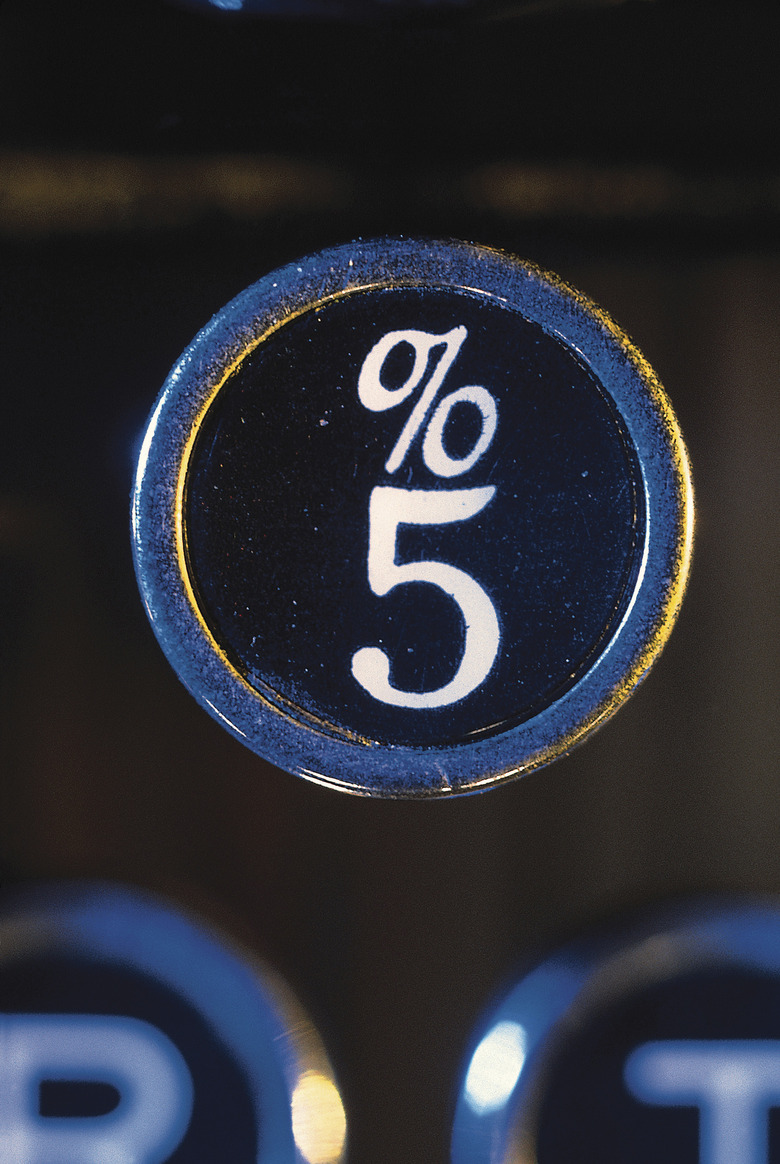How To Get The Inverse Of A Percentage
Percentages are just another way of expressing a fraction over 100. So, if 75 percent of students who took a test passed the test, you could also say that 75 out of every 100 students passed or — more simply — just write it as 75/100. Every ratio that can be expressed as a fraction — just like this one — also has a number called its multiplicative inverse, or the number you'd multiply it by to get a total of 1. All you have to do to find that inverse for a percentage is express the percentage as a fraction, then swap the numerator and denominator of the fraction.
Work an Example
Work an Example
If 23 percent of students do their homework every night, find the inverse of that percentage. First you express the percentage as a fraction over 100: 23/100. Then you swap the numerator and denominator to get the multiplicative inverse: 100/23. This works because when you multiply across you get 23/100 x 100/23 = 23(100)/23(100) which cancels out to 1/1 or 1. The same is true for any numerator and denominator, as long as neither one is equal to zero. So, the inverse of 23 percent is 100/23 or, if you must write it out as a decimal, 4.35, when rounded to the nearest hundredth.
References
Cite This Article
MLA
Mulrooney, Marie. "How To Get The Inverse Of A Percentage" sciencing.com, https://www.sciencing.com/inverse-percentage-8645937/. 24 April 2017.
APA
Mulrooney, Marie. (2017, April 24). How To Get The Inverse Of A Percentage. sciencing.com. Retrieved from https://www.sciencing.com/inverse-percentage-8645937/
Chicago
Mulrooney, Marie. How To Get The Inverse Of A Percentage last modified March 24, 2022. https://www.sciencing.com/inverse-percentage-8645937/
